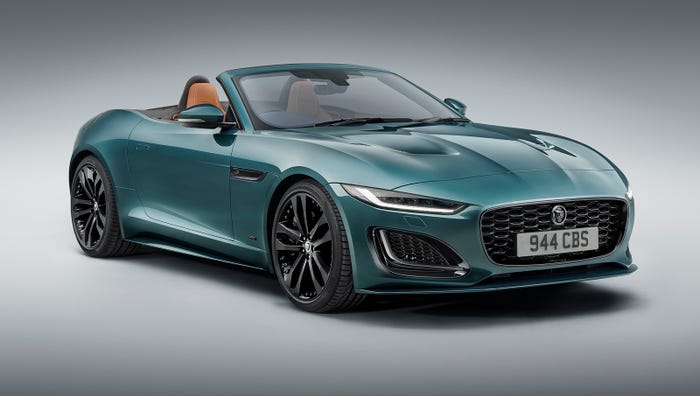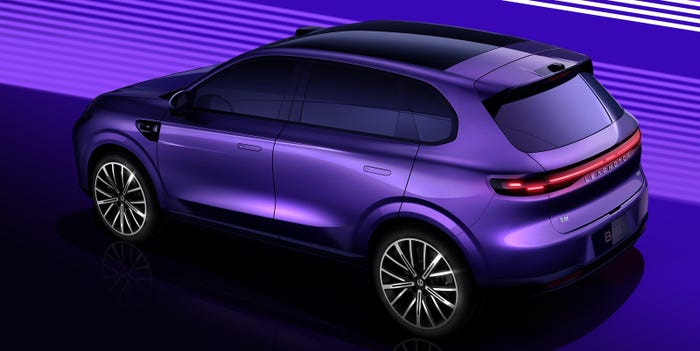GM Sees Tweaked Chevy Malibu Delivering Sales, Market Share Gains
The early refresh of the Malibu represents what typically would be considered a midcycle enhancement and addresses other key segment criteria such as second-row roominess and comfort.

PLYMOUTH, MI – General Motors expects tweaks to its Chevrolet Malibu, which the automaker redesigned one year ago, will lift sales and market share of the midsize sedan and plans to put the marketing muscle behind it to ensure they do.
“With the fuel-economy improvement, we will get on more shopping lists,” says Russ Clark, global marketing manager-midsize cars at Chevrolet.
“Just a point of share in this segment is a lot of cars,” he tells WardsAuto during a test drive here of the ’14 Malibu. “Our goal is to improve (market share). We have the capability sales- and production-wise, so we’re going to fight for every tenth of a point.”
Sales last year of the redesigned ’13 Malibu rose 3.0% to 210,951 units from 204,808, compared with an industry up 13.4%, to give the car 10.2% of the Upper Middle Car segment, according to WardsAuto data.
That’s down from 12.4% of the segment in 2011.
So far this year, Malibu sales are down 13.7% and segment market share has slipped to 8.4%, putting the car at a distant fifth place behind the Toyota Camry, Honda Accord, Nissan Altima and Ford Fusion.
GM pulled the introduction of the ’13 Malibu ahead of schedule last year to get a jump on redesigns by rivals. It took most of the year to make its three powertrain options available, which combined with shortcomings such as a cramped back seat to keep a lid on sales.
Clark says the pull-ahead did not impact the finished product.
But for ’14 the Malibu adds a standard stop/start technology, pushing fuel economy up 3 mpg (1.3 km/L) to 25 mpg city (9.4 L/100 km) and 2 mpg (0.9 km/L) to 36 mpg (6.5 L/100 km) highway.
The uptick in fuel economy means online tools used to shop for vehicles achieving at least 35 mpg (6.7 L/100 km) will now return the Malibu in search results. Fuel economy is the No.1 reason for purchase in the segment, Clark notes.
Prices fall about $1,500 to $22,965 because the stop/start system mated to the Malibu’s 2.5L 4-cyl. engine costs less than the more sophisticated eAssist hybrid unit joined to the ’13 model’s 2.4L 4-cyl.
That means the Malibu will drop eAssist altogether and go with two engine options including a 2.0L turbocharged 4-cyl. engine as the range-topper. Both engines in the ’14 Malibu are mated with a 6-speed automatic transmission, which receives hardware and software upgrades to aid in the efficiency improvements.
The powertrain changes give the Malibu segment-leading fuel efficiency and power, GM says.
However, the automaker has no plans to altogether eliminate eAssist, a key powertrain strategy introduced two years ago to help meet future U.S. fuel-economy regulations. In fact, a second-generation system remains in the works, says Todd Pawlik, chief engineer on the Malibu.
But given the efficiency and affordability of the new stop/start system, Clark says it made sense to roll it into the Malibu. Affordability is another key shopping metric in the segment, he says.
Clark says the early refresh of the Malibu represents what typically would be considered a midcycle enhancement and addresses other key segment criteria such as second-row roominess and comfort. It also reflects the competitive nature of the segment, which together with small cars and small CUVs comprises more than 40% of U.S. sales, as well as a new flexibility at GM to make running changes.
“It also gets to our whole philosophy of being the best you can be,” Clark adds. “Our processes are better, too, so they can make these changes when (powertrain) technologies overlap.
“If we can bring a technology to market, we will,” he says. “We’re not going to bring a car out and leave it alone if we can improve it.”
Expect a big marketing push in coming weeks that will last into next year, says Chris Perry, vice president-marketing, Global Chevrolet.
Television commercials will highlight the car’s functional attributes and make an emotional connection with viewers, he says, much as GM sought to do in its advertising for the redesigned Chevy Silverado large pickup launching now.
“The importance of Malibu is to gain share for GM in the heart of the market,” Perry says.
“We’re looking at this as an all-new launch. And we’re putting the investment behind it to make sure we’re successful.”
Other enhancements to the Malibu include a reworked center console with a bigger armrest. It is a fixed armrest this time, instead of sliding. The previous one would cover a cupholder when pulled all the way forward for smaller-statured occupants.
A decorative bezel now circles the center stack, whereas before it only covered three sides, for a more finished appearance.
The rear seating area gains 1.25 ins. (320 mm) of knee room, improves bolstering to the outboard positions, makes ingress/egress easier and covers with soft materials areas where a rear passenger’s knee might knock.
The Malibu also adds text-to-voice instant messaging for smartphone users and Siri capability for iPhone owners. For texting while driving, drivers can speak their command, use standardized messages already programmed into the car, such as “on my way home,” or customize a standard message. Siri gives occupants general information, such as the score of the previous night’s ballgame, on command.
The exterior receives an updated front fascia with a wider, more prominent grille.
The 2.0L turbo gains 14% more torque to 295 lb.-ft. (400 Nm) for greater responsiveness, GM says.
About the Author
You May Also Like





